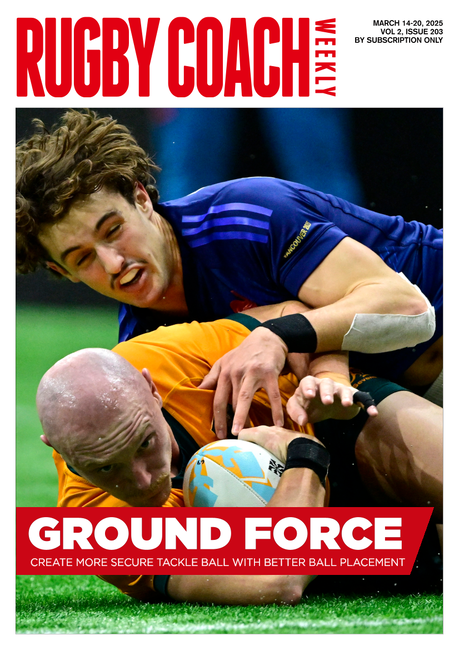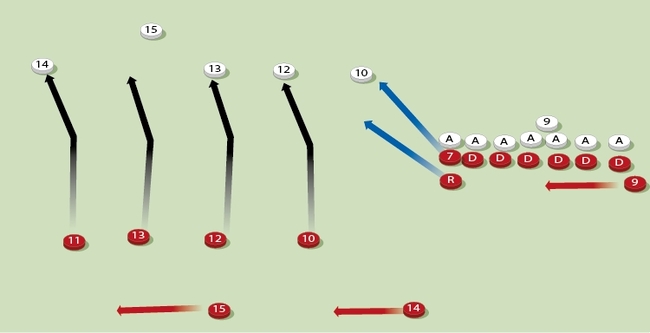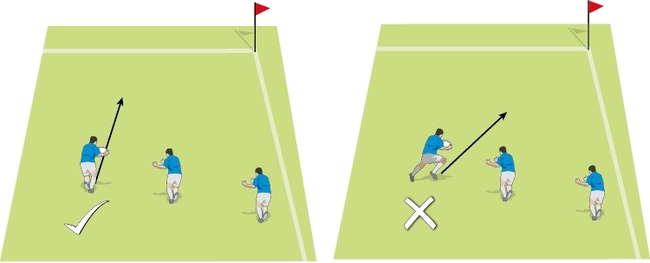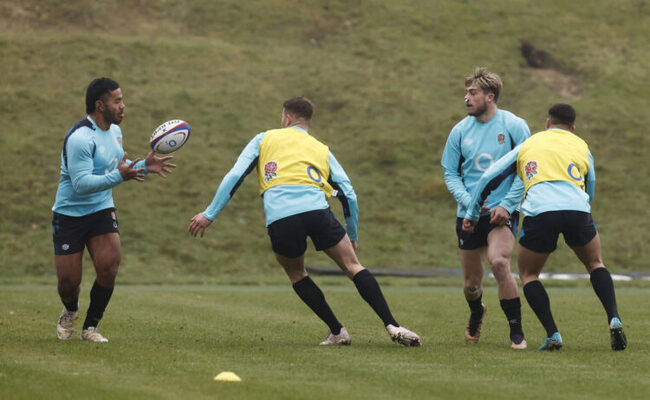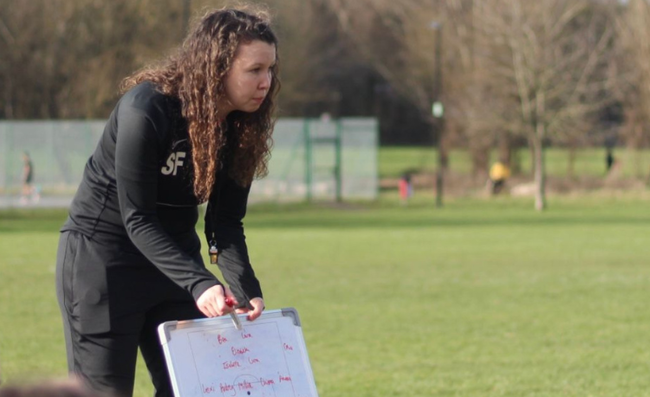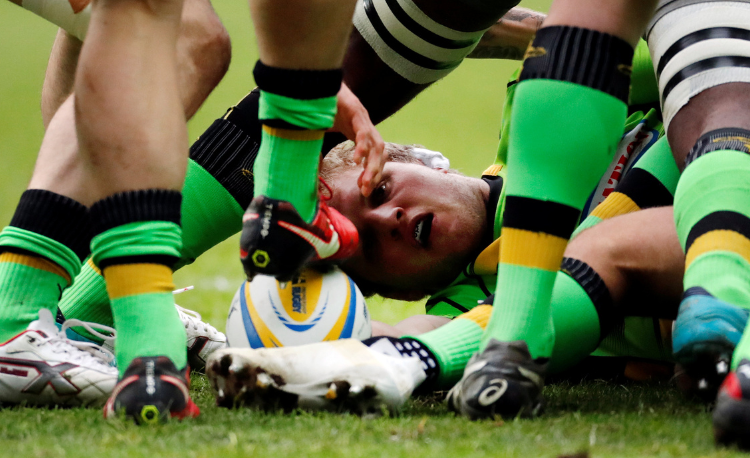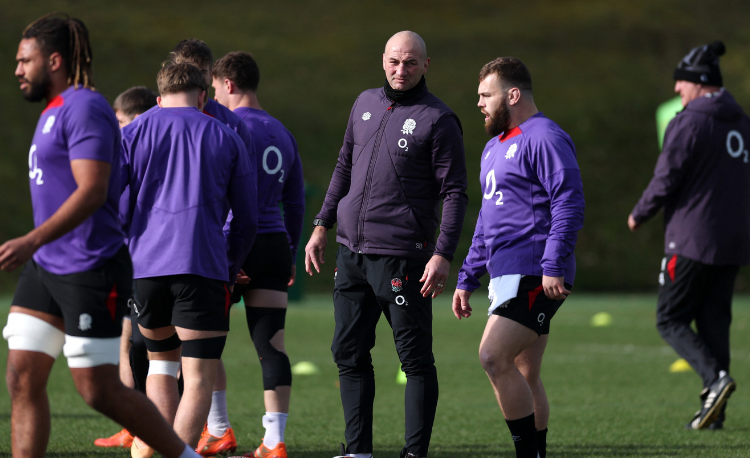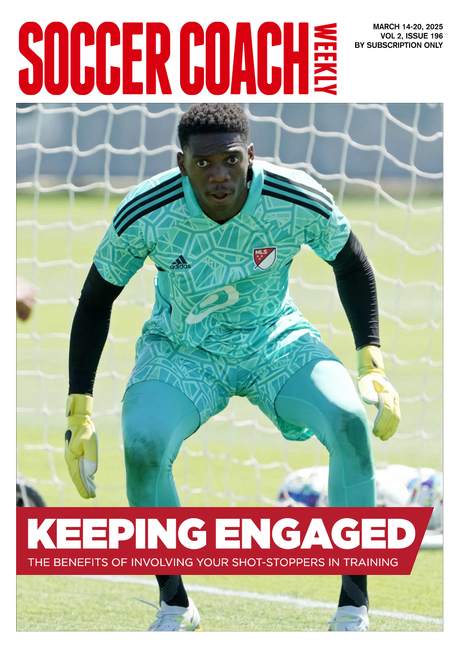Help! Is there a session I can use to bring the full back in on the narrow side after a lineout?
Subscriber question: Is there a session I can use to bring the full back in on the narrow side after a lineout?
The key to this challenge is to create a 15m channel where there aren’t many defenders, so use this whole-part-whole session to achieve that.
Play a game of ‘sticky middle’ touch. Play on a pitch with a 10m corridor in the middle (say 50m wide, so using one of the 10m-to-halfway channels to split up the pitch).
The defenders start in any of the corridors, but if they move into the middle corridor they have to stay there.
If there’s a touch, two defenders have to go onto their chests, and the ball carrier goes to ground before another attacker passes the ball away.
The sting! The attack aims to force the defence to compress defenders into the middle by attacking them there a couple of times. As the defenders go to ground, other defenders must fill in, creating a possible shortage left or right.

Split a 20m square box in half, lengthways. Put three attackers in one box with a 15 behind them and a wing in the other box (see graphic above). The attackers play into their box, with one going to ground, the nearest player clearing over.
Tactical notes

Then the feeder releases the 15 going into the other box.
To develop, add defenders or double the width of the second box to 20m to provide a different space for the 15 to run into.
Go back to the game – but this time all restarts are from the side of the pitch. The attack aims to get the ball to the sticky middle corridor, perhaps play another phase going the same way, and then attack blind if the numbers are good.
Three ways the attack could do it are:
Adapt by making the ‘sticky middle’ wider.
ANSWER
The key to this challenge is to create a 15m channel where there aren’t many defenders, so use this whole-part-whole session to achieve that.
WHOLE
Play a game of ‘sticky middle’ touch. Play on a pitch with a 10m corridor in the middle (say 50m wide, so using one of the 10m-to-halfway channels to split up the pitch).
The defenders start in any of the corridors, but if they move into the middle corridor they have to stay there.
If there’s a touch, two defenders have to go onto their chests, and the ball carrier goes to ground before another attacker passes the ball away.
The sting! The attack aims to force the defence to compress defenders into the middle by attacking them there a couple of times. As the defenders go to ground, other defenders must fill in, creating a possible shortage left or right.
PART

Split a 20m square box in half, lengthways. Put three attackers in one box with a 15 behind them and a wing in the other box (see graphic above). The attackers play into their box, with one going to ground, the nearest player clearing over.
Tactical notes
- A 15 realigns to the edge of the middle line, timing his run so he’s not in position too early.
- A winger maintains his depth and width.

Then the feeder releases the 15 going into the other box.
To develop, add defenders or double the width of the second box to 20m to provide a different space for the 15 to run into.
WHOLE
Go back to the game – but this time all restarts are from the side of the pitch. The attack aims to get the ball to the sticky middle corridor, perhaps play another phase going the same way, and then attack blind if the numbers are good.
Three ways the attack could do it are:
- Attack short from the side (like a driving lineout would), then attack the middle.
- Attack the middle straightaway, then attack the far corridor, before coming back.
- Attack the middle, then attack the middle again, then come back to the near side.
Adapt by making the ‘sticky middle’ wider.
Newsletter Sign Up
Coaches Testimonials

Gerald Kearney, Downtown Las Vegas Soccer Club

Paul Butler, Florida, USA

Rick Shields, Springboro, USA

Tony Green, Pierrefonds Titans, Quebec, Canada
Subscribe Today
Be a more effective, more successful rugby coach
In a recent survey 89% of subscribers said Rugby Coach Weekly makes them more confident, 91% said Rugby Coach Weekly makes them a more effective coach and 93% said Rugby Coach Weekly makes them more inspired.
Get Weekly Inspiration
All the latest techniques and approaches
Rugby Coach Weekly offers proven and easy to use rugby drills, coaching sessions, practice plans, small-sided games, warm-ups, training tips and advice.
We've been at the cutting edge of rugby coaching since we launched in 2005, creating resources for the grassroots youth coach, following best practice from around the world and insights from the professional game.


